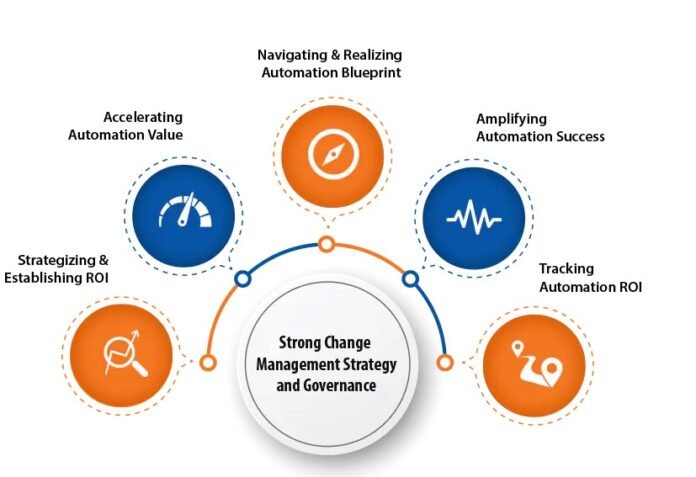In the rapidly evolving landscape of physical access control, technological advancements are driving transformative changes and reshaping security protocols worldwide. With an increasing emphasis on bolstering security measures and adapting to emerging threats, organizations are exploring innovative solutions that harness the power of cloud integration and biometric authentication. A recent report by Genetec provides valuable insights into the prevailing trends in the sector, shedding light on the preferences and investments of companies engaged in physical security technologies. Moreover, the introduction of novel solutions by key industry players, such as BioConnect and Pan Pan, underscores the imperative of adaptability and efficiency in safeguarding physical spaces against a myriad of security risks. As organizations navigate this dynamic landscape, understanding and leveraging these advancements is paramount to ensuring robust security frameworks capable of addressing the evolving challenges of the digital age.
Growing Investments in Access Control and Cybersecurity Tools
The survey conducted by Genetec underscores a significant trend among companies involved in physical security technologies – a notable increase in investments earmarked for access control and cybersecurity-related tools in the year 2024. This trend reflects a growing recognition among organizations of the critical importance of fortifying security measures to effectively mitigate evolving threats. As technologies evolve and threats become more sophisticated, businesses are prioritizing investments in cutting-edge access control solutions and robust cybersecurity protocols to safeguard physical assets and ensure the integrity of their security infrastructure.
Diversification of Security Solutions
The survey findings also highlight a noteworthy diversification in the types of security solutions garnering attention from companies in the physical security sector. Beyond the traditional access control system, such as video surveillance, there’s a discernible shift towards implementing multifaceted security protocols. Companies are investing in a range of solutions, including asset tracking software and incident management systems, to address various vulnerabilities comprehensively. This diversification reflects a proactive approach by organizations to adapt to evolving security challenges and enhance their overall security posture.
Adoption of Facial Recognition and Biometric Authentication
Advancements in facial recognition technology have spurred a notable uptick in the adoption of biometric authentication methods for physical access control. Solutions leveraging facial recognition and fingerprint biometrics are gaining traction due to their ability to offer secure and convenient means of verifying identities. By incorporating a biometric system into access control systems, organizations can enhance security while streamlining access procedures for employees and authorized personnel. This trend underscores a broader shift towards more sophisticated and user-friendly authentication methods in the realm of physical security.
Cloud Technology’s Ascendancy in Security Infrastructure
Cloud technology is emerging as a pivotal enabler of innovation in the realm of physical access control. The survey reveals a significant increase in the adoption of cloud or hybrid cloud environments among organizations, signaling a fundamental shift in how security infrastructure is deployed and managed. Cloud-based solutions offer numerous advantages, including scalability, flexibility, and remote accessibility, making them well-suited for modern security challenges. Moreover, cloud integration opens avenues for AI-driven applications, such as machine learning algorithms, to analyze vast amounts of data and enhance threat detection capabilities. This ascendancy of cloud technology underscores its transformative impact on the security industry, paving the way for more agile and responsive security frameworks.
Challenges and Considerations Amidst Industry Growth
Despite the promising trajectory of the physical security industry, several challenges loom large on the horizon. Rising cyber threats pose a significant risk to security infrastructure, necessitating robust cybersecurity measures to safeguard against potential breaches and data compromises. Supply chain constraints also present a challenge, particularly in sourcing critical components and technologies essential for security systems. Additionally, the Covid-19 pandemic has disrupted workforce dynamics, leading to human resource issues that may impact the deployment and maintenance of security solutions. Addressing these challenges will require concerted efforts from industry stakeholders, including proactive risk management strategies, collaboration on cybersecurity initiatives, and investment in workforce resilience programs. By navigating these challenges effectively, the industry can sustain its growth momentum and continue to innovate in the pursuit of enhanced security capabilities.
The trajectory of the physical access control industry is marked by unprecedented innovation and evolution. The convergence of cloud technology and biometric authentication is reshaping traditional security paradigms, offering organizations new avenues to fortify their defenses and enhance operational efficiency. However, amidst this progress, challenges such as rising cyber threats, supply chain constraints, and workforce disruptions loom large, underscoring the importance of proactive risk management and collaboration among industry stakeholders. By embracing emerging technologies, navigating challenges effectively, and prioritizing comprehensive security measures, organizations can not only safeguard physical assets but also foster a safer and more resilient environment for employees and stakeholders alike. As the industry continues to evolve, the pursuit of innovation and adaptability will remain central to ensuring robust and future-ready security frameworks capable of addressing the complex threats of tomorrow.








